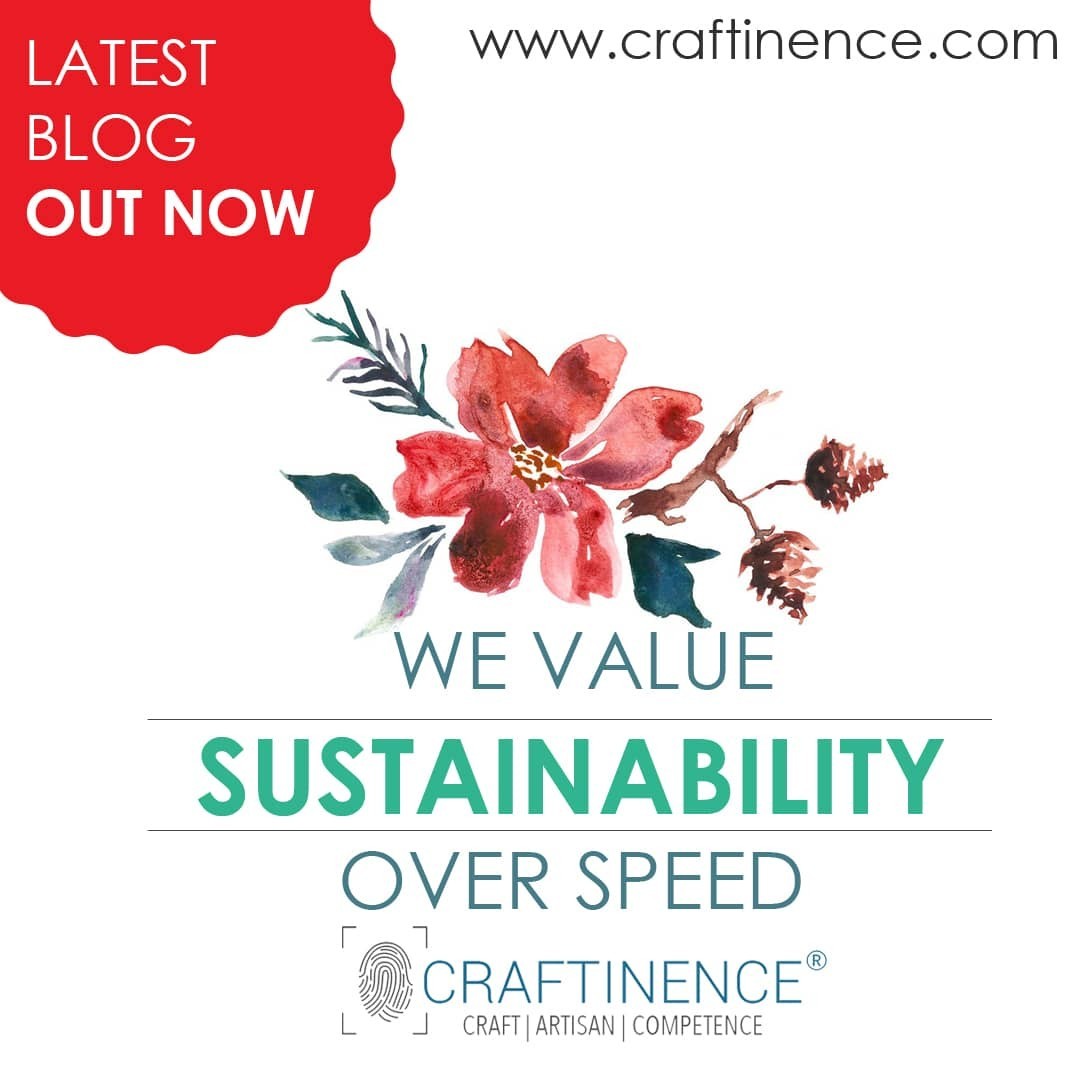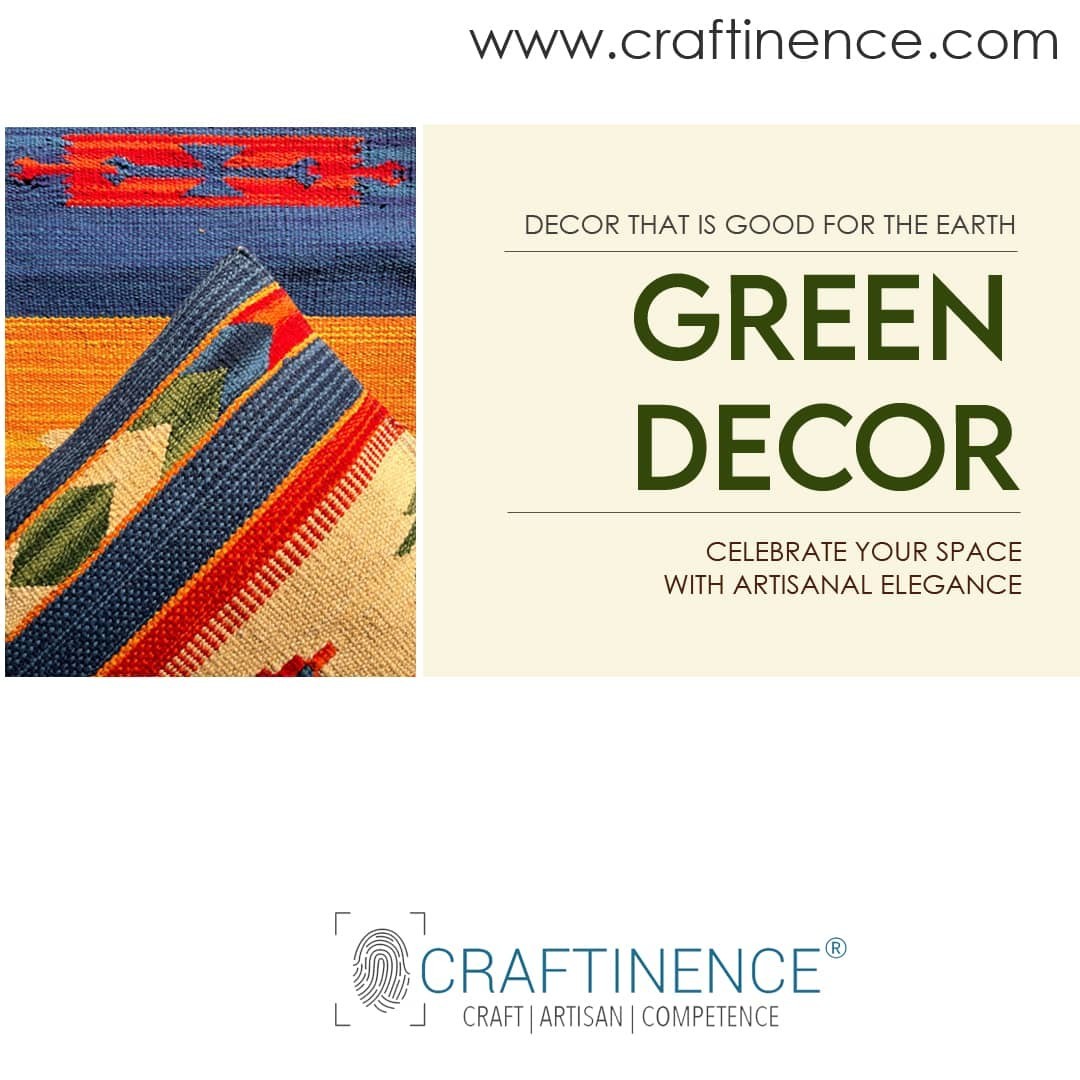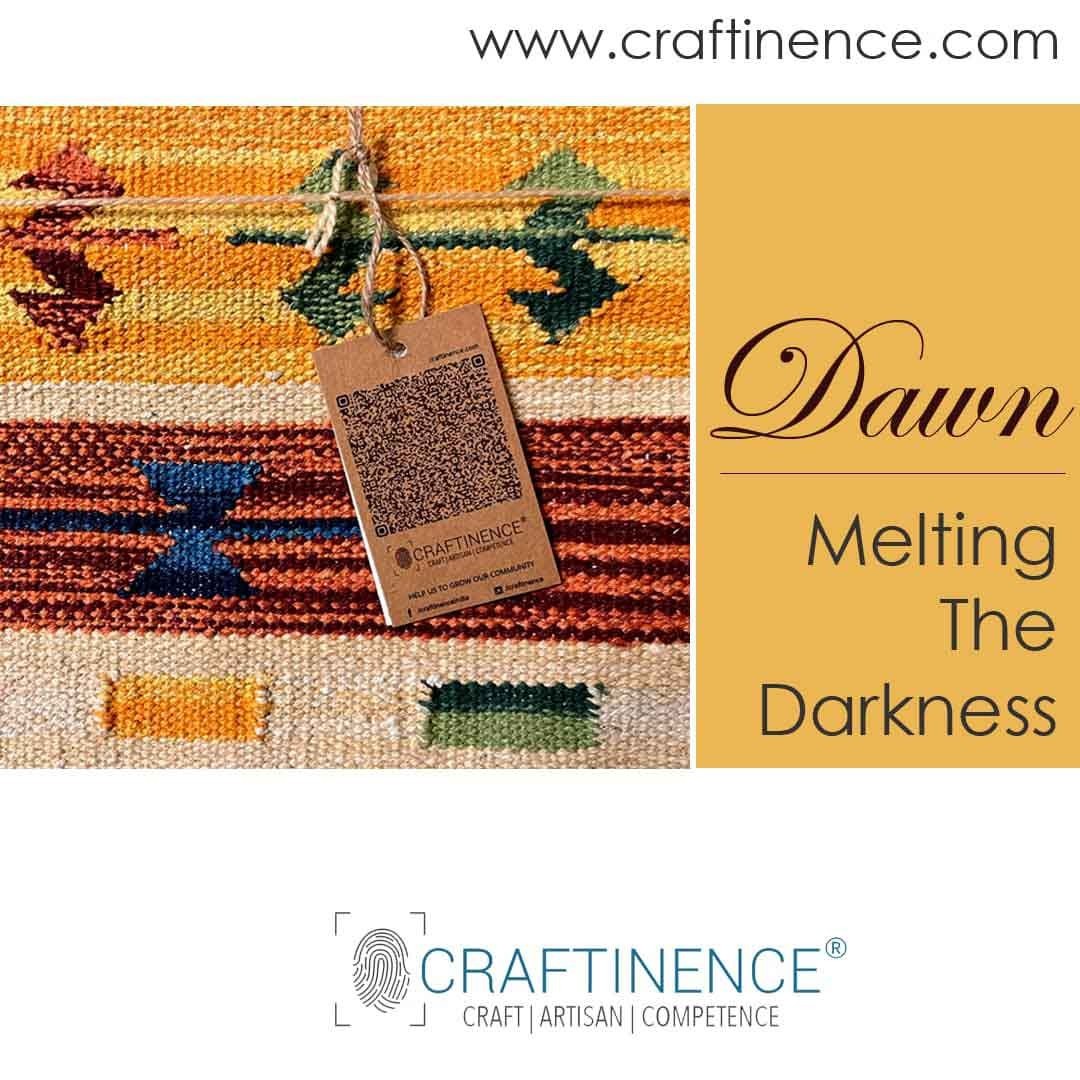Categories
Latest Post
-
comment 0 comments
-
10 Reasons to Be Proud of Owning a Handmade Craftinence®...
comment 0 comments -
Say Goodbye to Boring eco friendly gifts Gifts: Discover...
comment 0 comments -
Cushion Cover Set of 5: A Home Design Must-Have
comment 0 comments -
Discover This Holi how Craftinence® & EarthBased Are...
comment 0 comments -
How to Keep Your Dining Table Mats Clean and Maintained:...
comment 0 comments
Recent Comments
-
These boho bags are useful & easy to carry. Best companion during your casual...Mar 1, 2024

Consumer Preferences for Kilim Cushion Covers: Considering earth and Sustainable Home Décor Movement in India
The global shift towards sustainability has made a profound impact on various industries, with home décor being no exception in India.
This movement has gained significant traction, especially among the urban middle class, which is increasingly seeking products that are not only aesthetically pleasing but also environmentally responsible. Among the various options available, Kilim cushion covers have emerged as a preferred choice, leading the charge in sustainable home décor. This blog delves into the growing consumer preference for Kilim cushion covers in India, the factors driving this trend, and the environmental benefits of choosing Kilim over other types of cushion covers.
The Rise of Sustainable Home Décor in India
India's home décor market is booming, with projections suggesting it will reach $30 billion by 2025. This growth is fueled by increased urbanization, rising disposable incomes, and a growing awareness of interior design trends. However, a notable shift in consumer preferences is the increasing demand for sustainable and eco-friendly products. According to a recent report by the Confederation of Indian Industry (CII), nearly 70% of Indian consumers prefer buying products that are environmentally friendly, even if they come at a premium.
Growth in Demand for Sustainable Home Décor
Sustainable home décor products, including furniture, textiles, and decorative items, have seen a steady rise in demand over the past few years. This trend is particularly pronounced in metropolitan cities like Delhi, Kolkata, Mumbai, Gujrat,Bangalore, Madhyapradesh, Chennai, where consumers are more conscious of their carbon footprint and the impact of their purchasing decisions on the environment.
Why Kilim Cushion Covers Are Leading the Sustainable Movement
Kilim cushion covers, traditionally handcrafted using age-old weaving techniques, have become a popular choice for Indian consumers who prioritize sustainability. Several factors contribute to this trend:
1. Eco-Friendly Production Process
Kilim cushion covers are made using natural fibers such as wool and cotton, which are biodegradable and have a lower environmental impact compared to synthetic materials. The dyes used in Kilim weaving are often derived from natural sources, reducing the use of harmful chemicals. Additionally, the weaving process itself is labor-intensive and relies less on machinery, resulting in a smaller carbon footprint.
2. Preservation of Traditional Craftsmanship
The production of Kilim cushion covers involves traditional weaving techniques that have been passed down through generations. By purchasing these products, consumers are supporting the preservation of cultural heritage and providing livelihoods to artisans in rural India. This aspect resonates with a growing segment of Indian consumers who value products with a story and a sense of authenticity.
3. Durability and Longevity
One of the key attributes of Kilim cushion covers is their durability. Unlike mass-produced cushion covers, which often wear out quickly and contribute to landfill waste, Kilim cushions are built to last. The robust weaving techniques and high-quality materials ensure that these covers can withstand wear and tear over many years, making them a more sustainable choice in the long run.
4. Aesthetic Appeal and Versatility
Kilim cushion covers are known for their vibrant colors, intricate patterns, and unique designs. They add a touch of ethnic charm and warmth to any living space, making them a favorite among interior designers and homeowners alike. Their versatility means they can complement both traditional and modern interiors, further enhancing their appeal among a wide range of consumers.
Consumer Preferences and Demographics
Urban Consumers Driving the Trend
Urban consumers, particularly those in tier-1 cities, are at the forefront of the sustainable home décor movement. A survey conducted by Nielsen in 2023 revealed that 65% of urban Indian households prioritize sustainability when purchasing home décor items. Among these, Kilim cushion covers ranked high, with 45% of respondents indicating a preference for handcrafted, eco-friendly textiles.
Impact of Social Media and E-Commerce
Social media platforms like Instagram and Pinterest have played a significant role in popularizing Kilim cushion covers among Indian consumers. Influencers and interior designers frequently showcase these products in home décor posts, highlighting their sustainable attributes and aesthetic appeal. Additionally, the rise of e-commerce platforms has made it easier for consumers to access a wide variety of Kilim cushion covers, further driving demand.
Environmental Impact: Kilim vs. Other Cushion Covers
To understand the environmental benefits of Kilim cushion covers, it's important to compare their production process with that of other types of cushion covers, particularly those made from synthetic materials.
1. Material Sourcing
Kilim cushion covers are made from natural fibers such as wool and cotton, which are renewable resources. In contrast, synthetic cushion covers are typically made from polyester or nylon, which are derived from petroleum, a non-renewable resource. The production of synthetic fibers also involves the release of harmful chemicals and significant energy consumption.
2. Manufacturing Process
The traditional weaving process used to create Kilim cushion covers is energy-efficient and produces minimal waste. On the other hand, the manufacturing of synthetic cushion covers often involves energy-intensive processes, including the extrusion of fibers and chemical treatments, which contribute to greenhouse gas emissions.
3. Biodegradability
Natural fibers used in Kilim cushion covers are biodegradable, meaning they break down naturally over time without harming the environment. Synthetic fibers, however, can take hundreds of years to decompose and often end up in landfills, contributing to long-term environmental pollution.
The Future of Kilim Cushion Covers in India's Sustainable Home Décor Market
As the demand for sustainable products continues to grow in India, Kilim cushion covers are well-positioned to remain a leading choice in the home décor market. Their combination of eco-friendly production, cultural significance, and aesthetic appeal makes them an ideal option for consumers who are looking to make more responsible purchasing decisions.
Consumer Awareness and Education
To sustain this trend, it is crucial to continue educating consumers about the benefits of choosing sustainable products like Kilim cushion covers. Retailers and manufacturers can play a key role in this by highlighting the environmental and social benefits of their products through marketing campaigns, product labeling, and customer engagement.
Supporting Artisans and Fair Trade
Ensuring fair compensation for artisans and promoting fair trade practices will be essential to the long-term sustainability of the Kilim cushion cover market. By supporting artisans, consumers can contribute to the preservation of traditional crafts and the livelihoods of those who create these beautiful products.
Innovations and Adaptations
As consumer preferences evolve, there may be opportunities for innovation in the design and production of Kilim cushion covers. For example, blending traditional designs with modern aesthetics or incorporating recycled materials could appeal to a broader audience while maintaining the sustainability of the product.
Conclusion
The growing preference for Kilim cushion covers in India reflects a broader shift towards sustainable living and responsible consumption. As more consumers become aware of the environmental and social impacts of their purchasing decisions, products like Kilim cushion covers are likely to play an increasingly important role in the home décor market. By choosing Kilim, consumers can not only enhance the beauty of their homes but also contribute to a more sustainable and equitable world.
In a world where every choice matters, Kilim cushion covers stand out as a symbol of sustainability, tradition, and timeless beauty. As they continue to lead the sustainable home décor movement in India, their impact will undoubtedly be felt for generations to come.









